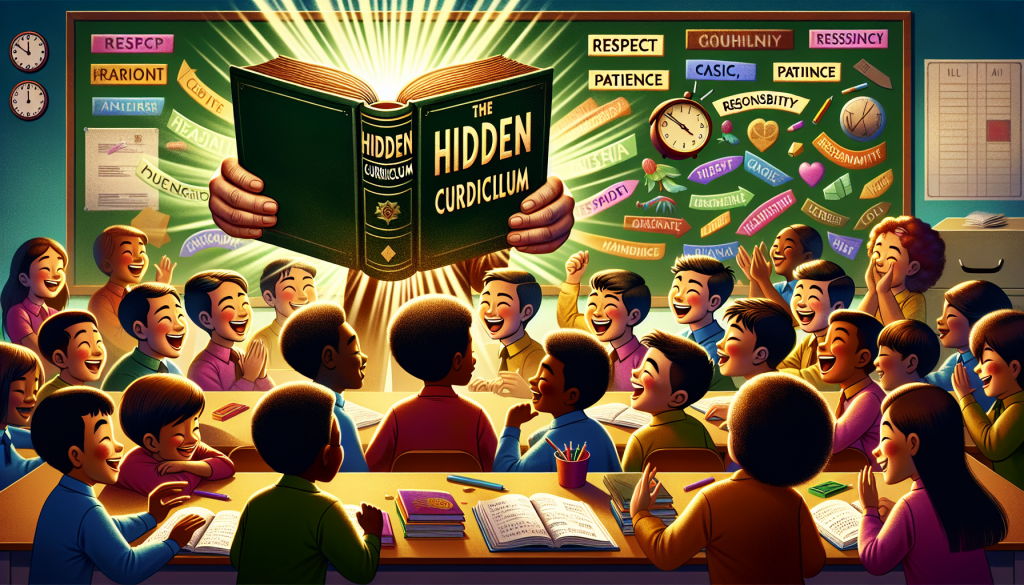
The Hidden Curriculum: What Schools Really Teach Our Kids
As parents and educators, we often focus on the core curriculum taught in schools – math, science, history, and language arts. But what about the hidden curriculum? The lessons and values that are not explicitly taught, but still influence our children’s beliefs, attitudes, and behaviors. These subtle teachings, often referred to as the hidden curriculum, have a profound impact on our children’s development and can shape them into the individuals they become. In this article, we will delve into the hidden curriculum and how it influences our kids.
Defining the Hidden Curriculum
The hidden curriculum is the set of beliefs, attitudes, and values that are indirectly taught to students through the school environment and social interactions. While the formal curriculum is outlined in textbooks and lesson plans, the hidden curriculum is not written down or explicitly taught. It is often taught through the school culture, rules, and informal interactions between students and teachers.
The hidden curriculum is not necessarily negative or intentionally taught. In fact, many aspects of the hidden curriculum can be positive and beneficial to students. However, because it is not directly taught, it can be challenging for parents and educators to recognize and address.
The Influence of the Hidden Curriculum on Our Children
The hidden curriculum can have a significant impact on our children’s development, beliefs, and attitudes. Here are a few ways the hidden curriculum can influence our kids:
1. Socialization
The school environment plays a crucial role in shaping our children’s social skills. Through interaction with peers and teachers, children learn how to interact with others, navigate social norms, and form relationships. The hidden curriculum can reinforce values such as cooperation, respect, and inclusion, which are essential for healthy social development.
2. Values and Attitudes
The hidden curriculum can also shape our children’s values and attitudes. By observing how teachers and students behave and interact with one another, children learn what is considered acceptable behavior and what is not. The hidden curriculum can reinforce values such as punctuality, hard work, and respect for authority.
3. Gender and Racial Stereotypes
The hidden curriculum can also perpetuate harmful stereotypes and biases. Children are exposed to diverse backgrounds in schools, and the hidden curriculum can influence their attitudes towards certain genders, races, and cultures. For example, if a school only showcases male scientists and female homemakers in their curriculum, it can lead to gender stereotypes and reinforce gender roles.
The Role of Parents and Educators
As parents and educators, we can play a crucial role in addressing and shaping the hidden curriculum. Here are a few ways we can make a positive impact on our children:
1. Promote Open Communication
The first step in addressing the hidden curriculum is to have open and honest communication with our children. Encourage them to share their thoughts and feelings about their school experience. By understanding their perspective, we can identify any harmful beliefs or attitudes that need to be addressed.
2. Be Intentional about Inclusivity
Inclusivity should be a primary focus in every school. As parents and educators, we can create an environment where students from all backgrounds and identities feel valued and respected. We can also actively challenge any harmful stereotypes or biases that may arise in the school environment.
3. Teach Critical Thinking
The hidden curriculum can often perpetuate one-sided perspectives or beliefs. By teaching our children critical thinking skills, we can encourage them to question and evaluate information critically. This skill will help them navigate the hidden curriculum and form their own beliefs and attitudes.
In Conclusion
The hidden curriculum plays a significant role in shaping our children’s beliefs, attitudes, and behaviors. As parents and educators, it is our responsibility to be aware of the hidden curriculum and actively work towards creating a positive and inclusive environment for our children to learn and grow. By promoting open communication, inclusivity, and critical thinking, we can shape our children into well-rounded individuals who are equipped to navigate the hidden curriculum and the complexities of the world.
So the next time we think about what schools teach our kids, let’s not forget the influence of the hidden curriculum. And let’s work towards ensuring that those hidden lessons are positive and empowering for our children.
